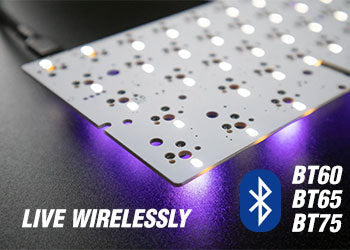Keyboard sizes are an important aspect of choosing the right keyboard for your needs. Keyboards come in different sizes and layouts, each with its own benefits and drawbacks. Understanding these different sizes and layouts can help you find the keyboard that is best suited for your typing habits, desk space, and personal preferences.
The most common keyboard sizes are full-size, tenkeyless (aka TKL), and 60% compact.
Full-size keyboards are the traditional keyboard size and include a numeric keypad, as well as a full complement of function keys and navigation keys. These keyboards are ideal for those who use the numeric keypad frequently and have a larger desk space.
Tenkeyless keyboards, on the other hand, do not have a numeric keypad and are smaller in size, making them a good option for those who need to conserve desk space. They are also popular among gamers who prefer a more compact setup for more room to move their mouse.
Compact keyboards are even smaller than tenkeyless keyboards and are designed to save desk space. They typically have a smaller layout, which can take some getting used to, but are ideal for those who need a very small and portable keyboard.
In addition to the traditional keyboard sizes, there are also ergonomic keyboards, which are designed to be more comfortable for extended typing sessions. Ergonomic keyboards come in different sizes and shapes, including split keyboards and curved keyboards, to help reduce strain on your hands, wrists, and forearms.
Ultimately, the right keyboard size for you will depend on your individual needs and preferences. If you frequently use the numeric keypad or have a lot of desk space, a full-size keyboard may be the best choice. If you are looking to conserve desk space or prefer a more compact setup, a tenkeyless or compact keyboard may be a better fit. And, if you are looking for a more comfortable typing experience, an ergonomic keyboard may be just what you need.
In conclusion, when choosing a keyboard, it's important to consider the size and layout that is best suited to your needs. Whether you prefer a traditional full-size keyboard, a more compact tenkeyless keyboard, or a specialized ergonomic keyboard, there is a keyboard size that is right for you.

